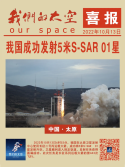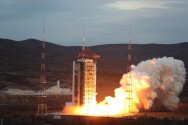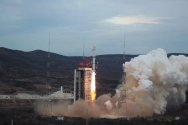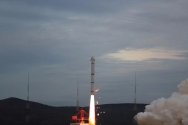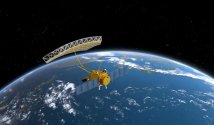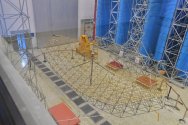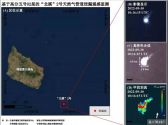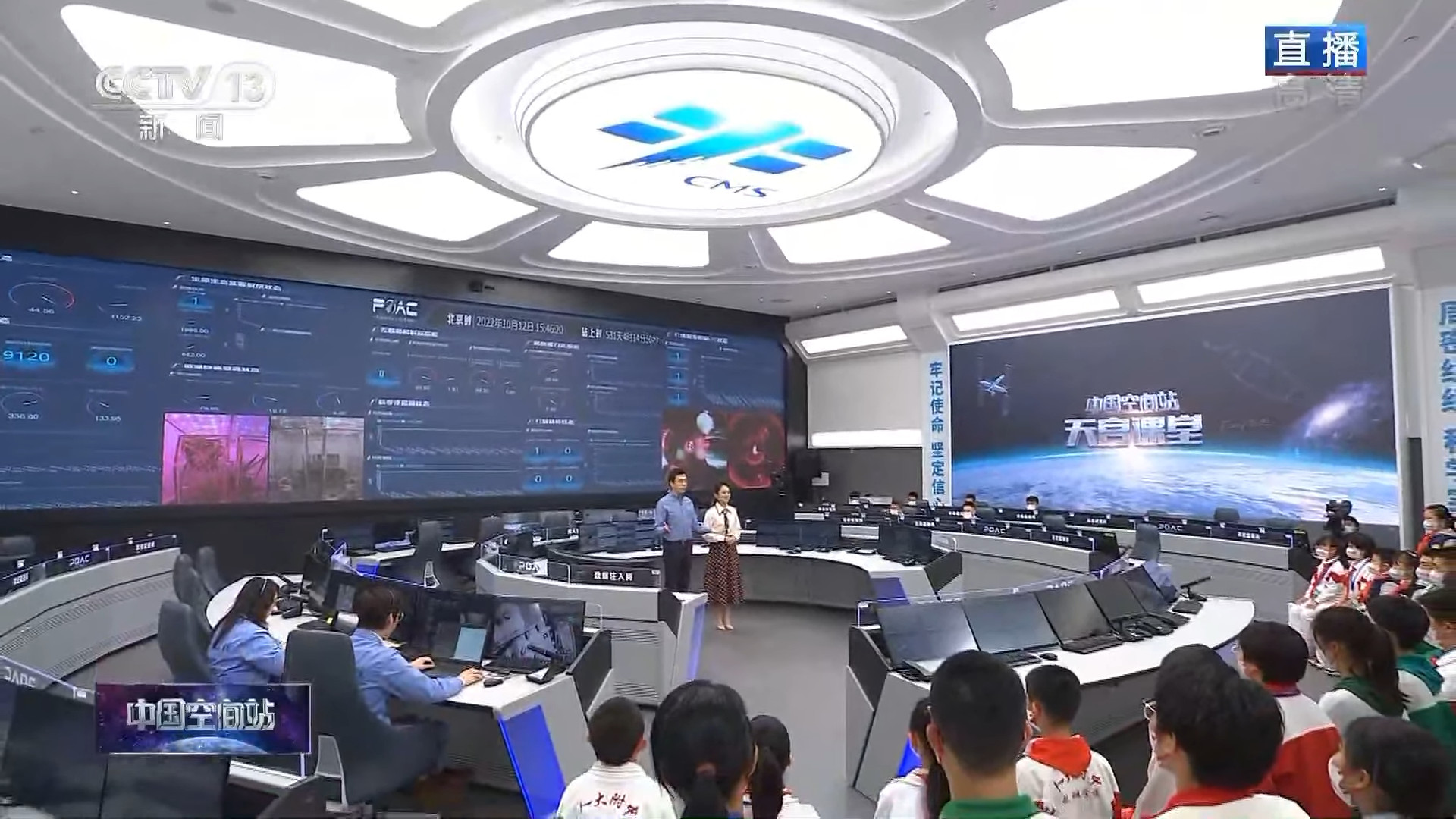You are using an out of date browser. It may not display this or other websites correctly.
You should upgrade or use an alternative browser.
You should upgrade or use an alternative browser.
China's Space Program Thread II
- Thread starter Blitzo
- Start date
by78
General
An image of the now L-shaped Chinese space station captured by a ground telescope.

Another image of the Chinese space station taken from the ground, but with much better quality. You can distinguish the solar panels.

Very nice photo.Another image of the Chinese space station taken from the ground, but with much better quality. You can distinguish the solar panels.

I have read that the station will use gravity gradient stabilization during the re-configuration phase. I had some thinking as how it would work. This photo suggests that I am thinking on the right path.
In this photo, Tianhe core module and Tianzhou craft are in line to the center of earth while Wentian module is in line of orbit. Tianhe and Tianzhou combo has a higher mass than Wentian. The combo is closer to earth center than Wentian. The station is self stabilizing in this orientation.
In my thought, the next step would be for them to rotate to an orientation that the combo is in line of orbit with Wentian pointing the earth. Then Mengtian will dock. They will tilt again with the combo point to earth again and Mengtian pointing away from earth, Wentian pointing along orbit. Mentian move to radial port. Finally tilt again with Tianhe on the orbit axis and two labs on the same plane parallel to earth surface.
by78
General
Some presentation slides from Deep Blue Aerospace. The company plans to carry out the first high-altitude VTVL test of its Nebula-1 rocket next year. Nebula-1 is a reusable rocket with a payload capacity of 2000kg to LEO and 1000kg to SSO. It's powered by the Thunder-R1 (a.k.a. Thunder-20) engines (20-ton thrust per engine, LOX/Kerosene fuel, nine engines for the 1st stage and one for the 2nd stage).






by78
General
Some old file photos of China's spacecraft docking mechanisms under development. The first image shows an early scaled prototype being studied. Images 3, 4, and 5 show a special fixture used to test full-scale prototypes. The last image shows an orbital rendezvous and docking simulation of Chang'e 5's ascender and orbiter being carried out on a dedicated simulation platform.










Last edited:
You're right, Infact they will do something exactly like that, very smartVery nice photo.
I have read that the station will use gravity gradient stabilization during the re-configuration phase. I had some thinking as how it would work. This photo suggests that I am thinking on the right path.
In this photo, Tianhe core module and Tianzhou craft are in line to the center of earth while Wentian module is in line of orbit. Tianhe and Tianzhou combo has a higher mass than Wentian. The combo is closer to earth center than Wentian. The station is self stabilizing in this orientation.
In my thought, the next step would be for them to rotate to an orientation that the combo is in line of orbit with Wentian pointing the earth. Then Mengtian will dock. They will tilt again with the combo point to earth again and Mengtian pointing away from earth, Wentian pointing along orbit. Mentian move to radial port. Finally tilt again with Tianhe on the orbit axis and two labs on the same plane parallel to earth surface.
Interesting that they also studied and tested this kind of docking. It strengthens my understanding of the mentality and approach of Chinese space industry. They are not going to accept the conclusion and choices that advanced countries have made, but they want to go through those steps that lead up to the conclusions, even they have no intension or expectation of making a difference choice. In this way they not only learn how but more importantly learn why. In this line of thought, I guess even if YF-130 or YF-90 are never used on a rocket, they will continue their developments to the last step (some thousands hours burn time and hundreds start and restart), same to many other ongoing programs.Some old file photos of China's spacecraft docking mechanisms under development. The first image shows an early scaled prototype being studied. Images 3, 4, and 5 show a special fixture used to test full-scale prototypes. The last image shows an orbital rendezvous and docking simulation of Chang'e 5's ascender and orbiter being carried out on a dedicated simulation platform.

China launched S-SAR01, a 5-meter large antenna SAR surveillance satellite, by CZ-2C rocket from Taiyuan Satellites Launch Center in 06:53 UTC+8, October 13, 2022.2022年10月13日6时53分,我国在太原卫星发射中心使用长征二号丙运载火箭,成功将5米S-SAR01星发射升空,卫星顺利进入预定轨道,发射任务获得圆满成功。该卫星主要为应急管理、生态环境主体业务提供国产化数据保障,同时,服务于自然资源、水利、农业农村、林业草原、地震等行业。
此次任务是长征系列运载火箭的第443次飞行。
The satellite mainly provides data support for emergency management and ecological environment supervision. It also serves for the management of natural resources, water conservancy, agriculture and rural areas, forestry and grassland, earthquake prediction and other purposes.
This is the 443rd CZ series rocket launch.
